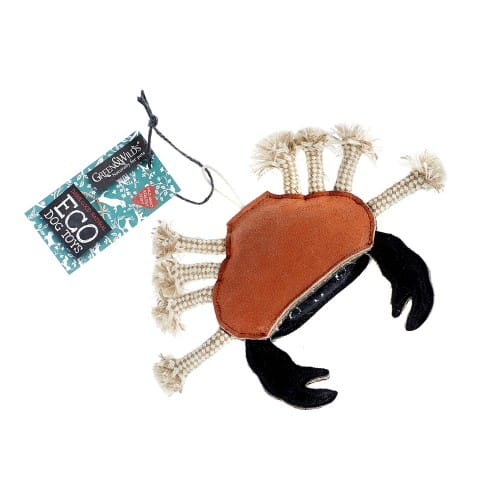Reducing Your Pet's Carbon Pawprint: Sustainable Toys
How you can reduce your pet's carbon pawprint by choosing sustainable toys!
Reducing Your Pet's Carbon Pawprint: Sustainable Toys


If you are a pet owner you will more than likely know all about the endless time, thought and money put into our furry family members (or perhaps not so furry reptilian friends), to keep them entertained and to exercise them both mentally and physically.
Statistics show that 92% of millennial pet owners buy their pets gifts - with over half of this number purchasing a new gift on a monthly basis. So, how long have you spent in the pet aisle searching for the perfect toy for your pet that won’t break the bank and that will last longer than a week in the grips of their paws, claws, and jaws? When searching for the perfect toy for your bundle of joy, have you considered the environmental impact of the most popular mass-produced pet products out there?
Most pet toys are made from plastic and other non-recyclable materials, which often means when they are no longer meeting the needs of your pets, they end up in the bin and eventually going to landfill. However, there are a few small and simple changes you can make to help decrease your pets’ carbon pawprint.
Buy Green:
The demand for green pet products is certainly there, with sales of green pet products estimated to reach over one billion dollars this year! With the growing trend, and need, for more environmentally friendly products there is no shortage of pet toys made with recycled, degradable, and recyclable materials.
On the market there are endless amounts of toys for cats and dogs made from natural plant fibres such as Jute, which is fully biodegradable. There are also options to purchase toys made from recycled plastic bottles, as an alternative to the plastic being made just to produce the toy. Some companies are committed to the green movement, offering plastic free packaging. Some even plant a tree for every toy purchased!
Donate your old toys:
Animal shelters are always on the lookout for donations such as blankets, food bowls, toys and treats, so why not donate? Not all animal shelters take used dog toys, so it’s important to check before - but most do if they are in good condition. This can be an excellent option for those toys your dog never played with, preventing them going to landfill.
Extend the toy’s life:
Quite often, pet toys no longer resemble the cute and cuddly toy they once were, as photographed by Hannele Lahti in ‘The Life Cycle of a Dog Toy’.
Too many owners throw away pet toys long before they lived their full life. Many toys can last a lot longer than you think. If you can repair a toy, do it. Excellent sewing skills are not required. Don’t be afraid to think outside the box if you need to – consider using old shirts and socks to help put a toy back together, or to change it up. Old t-shirts, braided into a rope, make for excellent tug of war toys – so get creative!
Share This:
